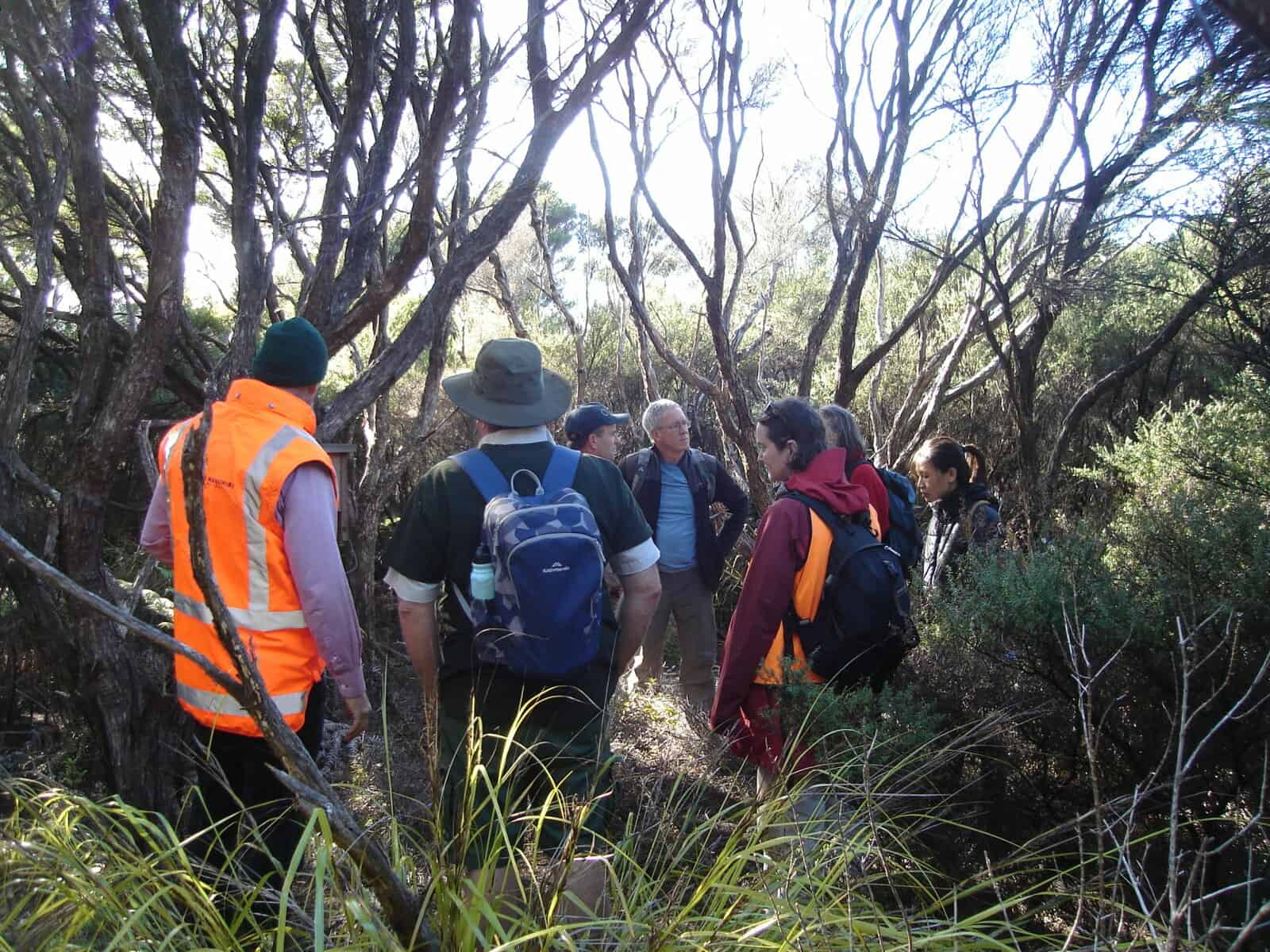They have been busy setting up new study plots in two of Auckland’s most beloved parks – Tāwharanui and Shakespear open sanctuaries.
In early June representatives from BMR, local iwi Ngāti Manuhiri and Auckland Council surveyed the sanctuaries for the perfect mānuka stands in which to set up monitoring plots.
Fortunately myrtle rust hasn’t been recorded in either of the sanctuaries yet, but these study sites will provide valuable data nonetheless.
Project manager Dr Renee Johansen says they will be collecting baseline data about ecosystem processes, so if rust does establish they can compare how these processes change.
“We are also comparing ecosystem processes in planted vs naturally regenerating mānuka, so even if myrtle rust does not establish during the programme, we will learn something about an important myrtle species commonly used in restoration,” she says.
Manaaki Whenua and BMR researcher Dr James McCarthy says they needed two to three locations where wild and planted mānuka stands were found fairly close to each other.
At each location, they will establish equal numbers of 20x20m plots in both the wild and planted stands.
“The idea is to find out if planted mānuka shrublands hold and cycle the same amount of carbon and nitrogen (above and below ground) as wild shrublands. This will give us a better idea of how the ecosystem functions provided by these systems might be at risk from myrtle rust,” James says.
“This is especially important with all the mānuka planting going on (often for honey production), and also how well it regenerates by itself.”
The team will be taking into account the biotic (living) factors at each site, as well as nutrient stocks in the soil and plants.
Hoa Nguyen will be looking at carbon, nutrient, and water cycling in more detail as part of her PhD: taking measurements and analysis on plant growth, canopy cover, plant physiology; and water sample of stemflow, throughfall and soil chemical characteristics.



Beyond Myrtle Rust is a MBIE funded programme that brings together many scientists from different institutes to collaboratively tackle myrtle rust invasion in Aotearoa.
